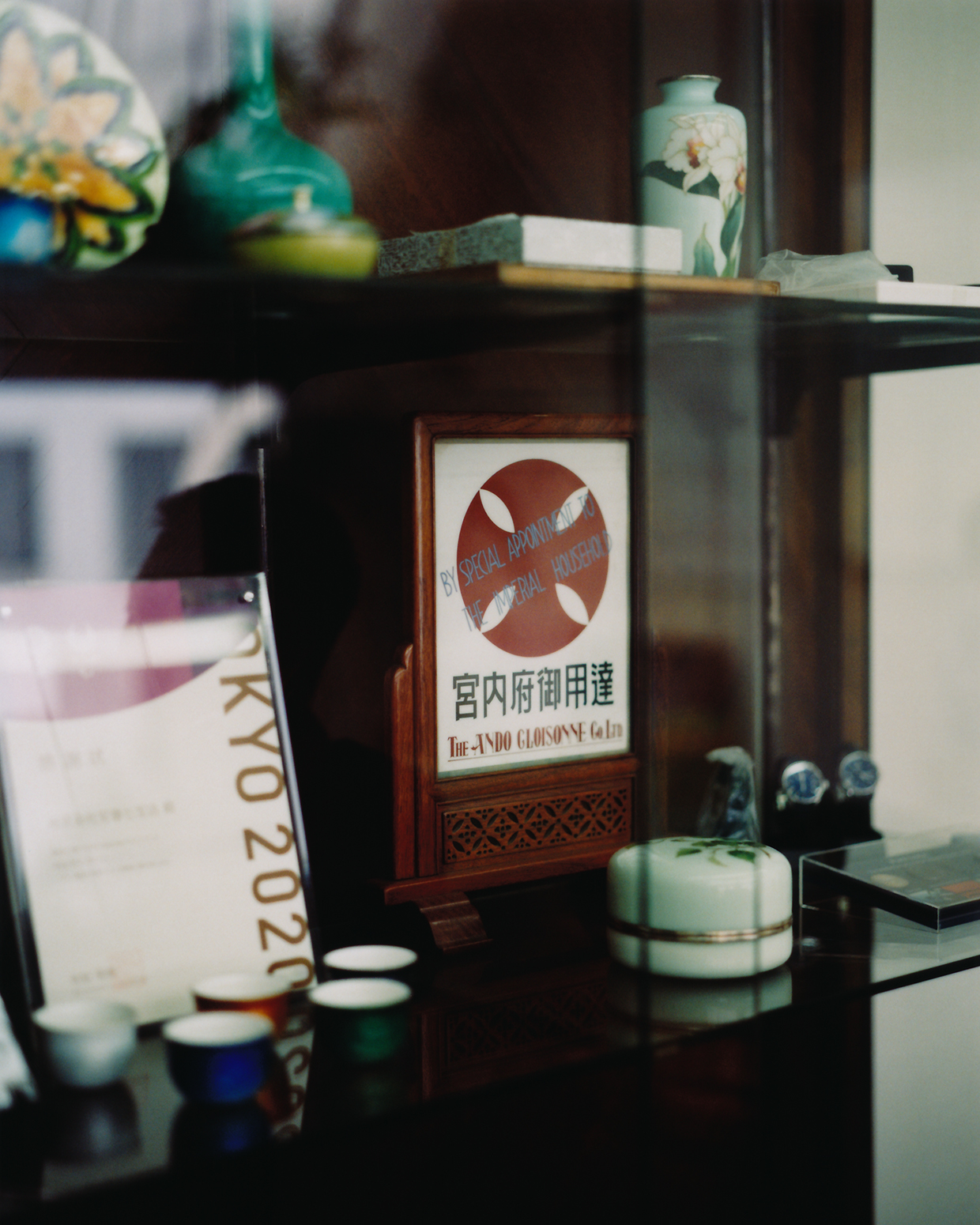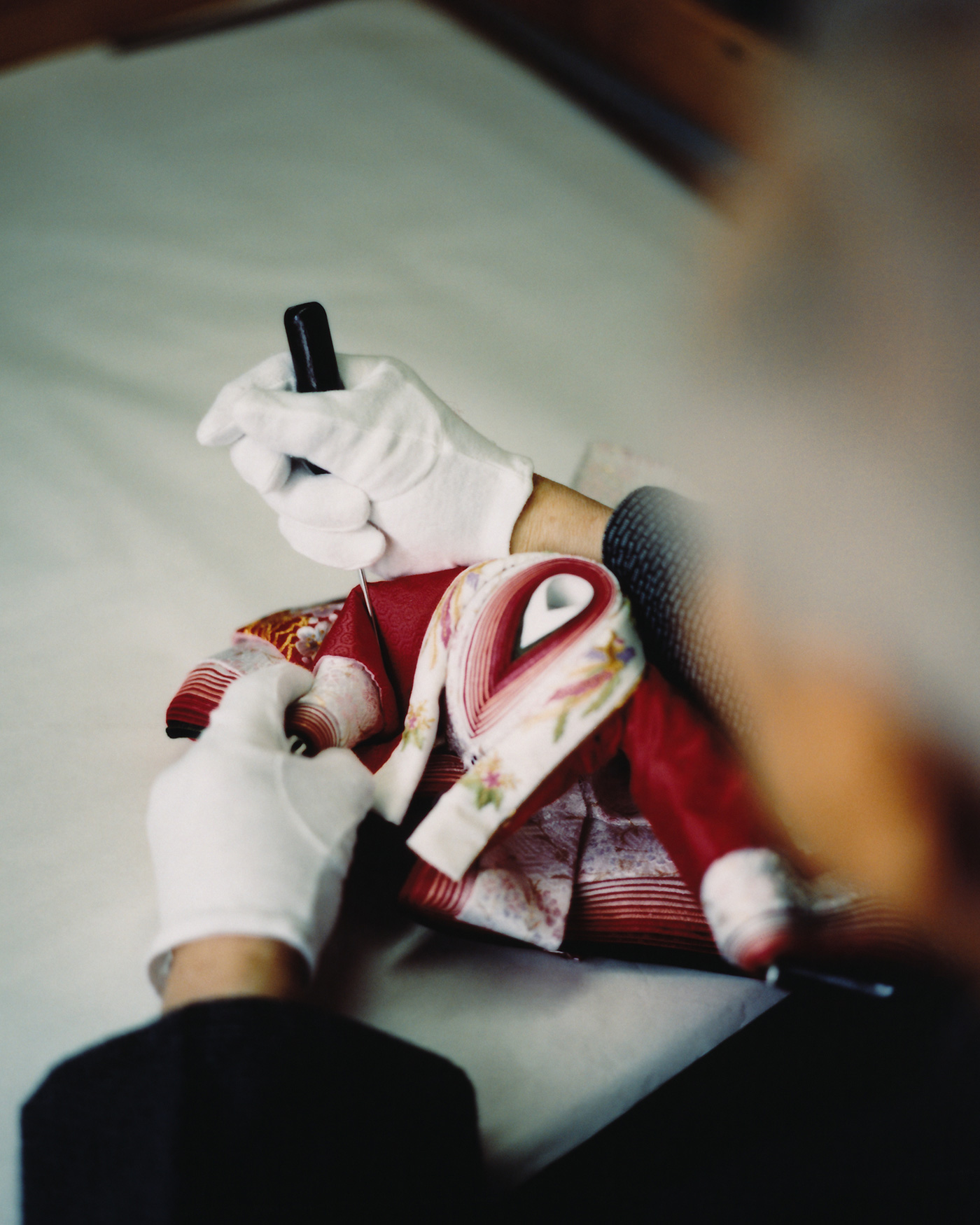What was the reason why you chose jewelry for this new project?
The first reason is that I thought the market was large. Even though the demand for the products I had been making was decreasing, I felt that customers were still aware of accessories and jewelry. I thought it would be a good idea to explore that a little more.
I also chose jewelry because I want to be beautiful no matter how old I get, and I want to be able to give people color.


What does the brand name “J.ANDO” mean?
This time, we named our new brand of accessories “J.ANDO.” Originally, our founder’s name was Jubei Ando, and J.ANDO was the name of the brand. Even now, I get emails from overseas asking me if I have a J.ANDO vase and if I can look it up or if it is still in my archives. So I wanted to revive it once more under the same name.
The origin of the name “Shippo” is also interesting. The name “cloisonne” is derived from “seven jewels” in the Buddhist scriptures, and it is said to have been named after pottery that is as beautiful as the seven jewels. I thought the story was very interesting.
That’s right. The designer who collaborated with us this time said that conventionally, when using stones, for example, there are only the number of colors that the stone has. And with metals, there are only as many colors as the metal itself. But with cloisonne glass, the ability to use a large number of colors is one of the charms of cloisonne. It was a matter of course for us, but when he said it, I thought, well, that is certainly true. The name “cloisonne” was originally a Buddhist term meaning “pottery comparable to numerous gold and silver treasures,” so I felt that color was the key to success.

Are there any unique trade secrets behind the colors of cloisonne enamel ware produced by Ando Cloisonne?
It’s not that I don’t have it, I mean, if there is something I really want to make, I make it from colors. For example, with paint, if you mix red and white, you get pink, right? But with cloisonne glazes, if you mix red and white, you just get red grains and white grains there, but they don’t mix. If you want to express a gradation from red to white, you have to go to the trouble of making a glaze of an intermediate color. So it’s like red, slightly lighter red, pink, and white. So you have to create colors for each of them. I wouldn’t go so far as to say it’s a trade secret, but there is a lot of effort that goes into making sure the colors are good.
I know you usually design and plan in-house, but in this collaboration with outside designers, have there been any new techniques or new thoughts or perspectives that you have adopted?
I am in the process of working on it, so I don’t have a specific idea yet. However, there are many restrictions when making cloisonne ware. The shape, the price, the amount of money, and so on. It takes a lot of time and effort, and it is not possible to streamline the process, so there is little chance that what the designer envisioned will be produced as it is.
It is not possible to design without a base of understanding of what cloisonne is and what the techniques are. That is why it has been difficult to ask outside designers to do the work. However, that would only allow us to think things through within ourselves, so we decided to go ahead with it. We are now actively accepting designs from people overseas, and our current position is that we have changed our way of thinking to ask how we can create such a design, rather than just saying “No, it’s not possible” based on our common sense.








